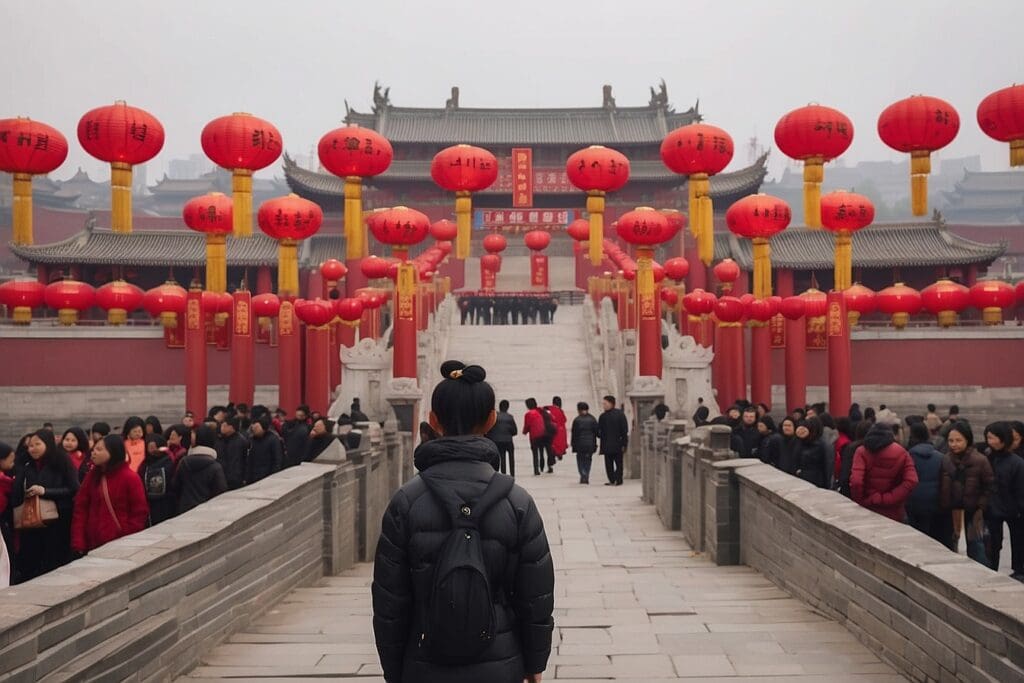My last memories of Beijing, China were of blue skies and celebration in the summer of 2008. As many of you may remember, bringing people from every nation together in the hustle and bustle of the capital of China. With a reputation for having very bad air pollution, the Chinese government ceased major industrial production months before the big event to ensure that Beijing was captured as a modern and beautiful capital city. This marked the beginning of environmental movements in China. Fast forward four plus years later to today and many more changes have been made—some good, some bad.
Unfortunately, the pollution that China worked so hard to reduce for the 2008 Olympics games has now returned and is worse than ever.1 With record level smog, Beijing is not only experiencing its worst pollution levels, but also the world’s worse levels. Ever since the Olympics, China has experienced an economic boom, raising the average quality of life for this developing nation. This allows for more and more people to purchase cars. The extreme traffic and increasing number of car owners is a contributor to the high levels of smog. Of course, this problem is not isolated to just China. Large urban cities like San Francisco, New York, Los Angeles, and many others have been experiencing increasingly bad traffic problems. Like some of these modern cities, Beijing has created an efficient and safe subway system to allow people to have an alternative mode of transportation, but it didn’t stop there. In an effort to decrease traffic and smog emissions from cars, Beijing has implemented a law that prohibits car owners from driving on certain days of the week organized by the last digit of license plates. This policy is driven by the overcrowding of the city’s roadways, but I see it as an environmental action as well. The law forces people to become accustom to public transportation, reducing the overall. Even with this, however, the increase in industry and population has caused what is now known as the worst smog of all time in Beijing.
Even though China has been notorious for its poor air quality, during my trip there I noticed that there are many environmentally conscious actions being taken by the Chinese people and government. In a previous article I wrote about, I expressed concern about the unsustainable ways sharks were being harvested for this extremely revered dish in countries like China. I was actually prepared to ask my relatives to stop their consumption of the soup at restaurants and buffets, but it seemed like someone beat me to it. In 2006, basketball star Yao Ming brought public attention to the negative effects of just one bowl of shark fin soup. Mr. Ming starred in a PSA for WildAid2 —an international organization whose mission is to end illegal wildlife trade—asking people to no longer drink and purchase shark fin soup.3 This PSA aired across the globe but had its biggest impact in China because to both the youth and the older generations, Yao Ming is an inspirational icon, being one of the only successful Chinese basketball players in the NBA. Although I was unable to find exact numbers to prove the decrease in the purchase of shark fin soup, after talking to my relatives and friends in China, I can tell there is now a negative stigma that comes with consuming the soup, which has encouraged people to find alternatives, or forgo the delicacy completely.
There are other dietary practices in China that are inherently in line with sustainability. Chinese traditional cuisine often encompasses all parts of the fish and animals used as food, as opposed to most Western cuisine which discards many parts of the fish and animal after taking the “prime” cuts. When one consumes fish in China, it includes the head, eye balls, and in certain species of fish, the bones. It is a common practice to eat pig and chicken feet, as well as the tongue of many animals. A culture that promotes the consumption of every part of an animal’s body produces less waste and encourages sustainable eating.

Restaurants and local markets in China are also complying with environmentally friendly policies. China has banned free single-use since 2008. Everywhere I went, I saw reusable totes and bags on the shoulders of almost every pedestrian. It has become the norm to use reusable bags over plastic and paper bags. Most restaurants do not provide toilet paper or paper towels, and those that do always post a reminder to only take what you need. Beyond that, the Chinese people have an appreciation for their new booming economy. As a result, they are more conscious about water and electricity usage. I cannot confidently generalize this and say that all Chinese citizens partake in these practices, but almost all of my relatives’ households have taken some of the following steps to reduce energy consumption and resource usage:
- When electronics, such as computers and televisions, are not in use, the outlets are turned off, or the cord is unplugged.
- Used water left over from showers and sinks are saved for use in toilets.
- Bottles are recycled or reused regularly. Although this is a common practice in the United States as well, the family members I stayed with treated recycling as part of their everyday routine rather than an extra burden or an inconvenience. They would wake up in the morning and check their trash bag (which they reused) full of recyclables. If it was full, they would drop it off at the local recycling stop.
- Instead of buying plastic water bottles (the water quality is not very high in China5), people boil tap water and let it cool to room temperature to ensure it is sterile enough to drink.
My trip to China completely changed my view of the way that Chinese people look at the environment. I never considered China to be an environmentally aware country. My early childhood memories contained the image of my uncles carelessly littering out of their car windows and a complete disregard for nature. But I can now see how their culture may actually be more environmentally friendly than American culture. Although their pollution conditions are notoriously bad and their are high, they have a lower per capita emission rate than the U.S. (but unfortunately have now reached the same level as the European average).6
There are efforts by both Chinese citizens and the Chinese government to clean up the country, but the problem comes down to one thing. Overpopulation is not a term solely used to describe the condition of China. It has been feared that Earth is nearing its peak population and will no longer be able to sustain the people on our planet. Although China may not be the pinnacle of environmental friendliness, it is taking steps to mitigate what may very well be the fate of our plant if we continue to live, pollute, and consume at our current rate. The lessons we can learn from the Chinese lifestyle and policies may help our own livelihood. It may take a while, but with the quick growth and development of both the nation and its environmental awareness, I am confident I will be able to see that blue, Chinese sky once again.



